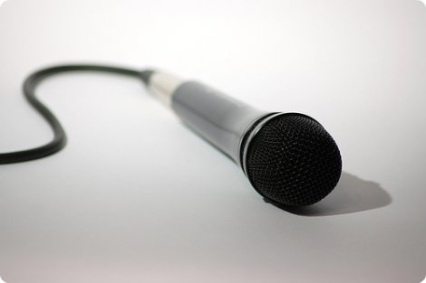
(Photo credit: SparkCBC/photopin/flickr/CC-BY-2.0)
Michelle Obama gave an emotional speech in Chicago this week about kids and gun deaths. Afterwards, she went on to visit a school called Harper High in Englewood – one of the city’s most dangerous neighbourhoods. Here, she reportedly spent two hours in private, speaking with and listening to students at the school.
The school also featured in a two recent episodes of This American Life. Three Harper students died in gang-related gun violence during the 2011-12 school year; 5 recent school leavers were also killed; and a further 21 kids were wounded by gunshots. In short, as the police officer assigned to Harper puts it, “…this ain’t no fairy tale”.
From the start of this academic year, three TAL reporters (Linda Lutton, Alex Kotlowitz, Ben Calhoun) spent a semester at the school to share what life is like for the kids and staff working there. Hearing the stories that this kind of access revealed is a privilege. As someone who’s worked with teenagers in schools, albeit in the UK not in the US, I know how important safeguarding is. But, done carefully, as TAL and Harper demonstrate, radio can share difficult, personal stories that have real impact on the listener.
Speech radio is by its nature a personal medium – the “friend in your ear”. And its creation is relatively personal too. This is especially the case if you are a reporter-producer on location, as it’s usually just you and the interviewee in a room. You’re also the one who’s approached that individual for interview and built a relationship with them. By contrast, the other broadcast medium – TV – is likely to require a bigger crew. This means more people in the room; more people to build trust between – entirely possible, as reels of great documentary television evidence, but something that often takes more time, which is not always available.
Radio recording is probably also less invasive in terms of kit. There will be microphone/s, and a recorder, often hand held, but that’s usually about it. Time-consuming establishing shots are not required; a hand-held recorder left on (of course with everyone’s awareness) as you walk & talk between interview locations will often do the job. Soundscapes and tone of voice reveal perhaps a surprising amount about a situation, despite the lack of visuals.
For example, several times in the programmes, we hear reporter Linda Lutton putting questions directly to the students at Harper. I think the language and she uses with the teenagers is closer to the kids’ natural use – the words are less formal; the tone more direct and less emphatic than the voice she uses in her recorded links in the same shows. She’s bridging the gap – relating to both the pupils and the audience to tell the story. The speedy and abstract nature of radio allows her to narrate these conversations with terminology interjections too, such as a ‘neutron’ meaning a person who is not affiliated with a gang (although, as explained, this status isn’t really possible now).
These kind of front-line stories aren’t easy to get. As presenter Ira Glass says, Harper High “gave us unusual access”. By trusting TAL, the school’s principal and her staff allowed their story to be heard at a time when the school is in particular need of financial help. Now, as well, it seems that perhaps listeners may have included individuals with political influence.
I don’t know whether the reason that Michelle Obama went to Chicago was because she or one of her advisors had heard the programme (TAL note the event here). But enabling anyone to hear Harper’s stories told in their own words is one reason why radio is such a powerful, important, and wonderful thing.